Are you looking for monthly income-paying investments outside of traditional fixed income like GICs or bonds?
There are certain stocks that pay more frequent dividends, which can be a great addition to an income-focused portfolio.
Only around 2% of dividend-paying, publicly-traded stocks pay their dividends on a monthly basis.
We will cover the best monthly dividend stocks in Canada below and discuss some of their features in more detail.
Should you Invest in Monthly Dividend Stocks?
Monthly dividend stocks can fit very well within a portfolio designed to provide a steady monthly income stream. They can help to reduce the interest rate risk that bonds will be vulnerable to.
Here are some circumstances in which to consider adding monthly dividend stocks to your portfolio.
1. Increasing Portfolio Diversification
If your portfolio does not currently contain stocks or other investments outside of bonds, adding monthly dividend stocks will likely boost its diversification. This is valuable because it can also help to reduce your portfolio’s interest rate risk.
2. Boosting Portfolio Yield
Some monthly dividend stocks pay an incredibly high yield on an annualized basis. While some high-yield bonds may also pay a high-income stream, most investment-grade bonds tend to pay a modest yield.
Adding high dividend-yielding stocks to your portfolio may increase its overall yield.
3. Your Risk Tolerance is too High for Bonds
Bonds offer limited upside potential, especially in a flat or rising rate environment. For more aggressive investors who are also looking for a monthly income stream, monthly dividend stocks can be a great alternative or complement.
Investing in monthly dividend stocks will give you more upside potential, provided you invest in good-quality stocks.
Pros and Cons of Monthly Dividend Stocks
Stocks that pay income on a monthly basis have their advantages and disadvantages for investors.
- Income on a monthly basis as opposed to quarterly, semi-annually, or annually
- Diversification for a traditional fixed-income portfolio designed for monthly income
- Can be used to offset monthly expenses
- Additional costs involved with paying dividends to investors more often
- The company is always required to have cash on hand (higher liquidity requirement)
- The company may be limited in its ability to grow over time
How to Pick Monthly Dividend Stocks
You should look at certain features of a monthly dividend stock before adding it to your portfolio.
Monthly dividend stocks should be assessed based on the following:
- Their dividend yield on an annualized basis
- How safe a company’s dividend yield is, based on its payout ratio
- If the stock fits your portfolio from a geographical allocation perspective
- If the stock fits your portfolio from a sector perspective
- Other generic stock-picking criteria (business model, growth potential, etc.)
Adding monthly dividend stocks to your portfolio should increase the positive elements of your portfolio (diversification, yield, etc.).
What Canadian Companies Pay Monthly Dividends?
This is a full list of all Canadian companies that issue monthly dividends. This list does not include REITs (I have added those at the bottom of the article)
| Company | Ticker | Market Cap | Dividend Yield (12-Month Trailing) |
|---|---|---|---|
| Atrium Mortgage Investment Corporation | AI.TO | $487.01 Million | 7.92% |
| A&W Revenue Royalties Income Fund | AW-UN.TO | $459.16 Million | 5.87% |
| Badger Infrastructure Solutions Ltd. | BDGI.TO | $1.59 Billion | 1.07% |
| Boston Pizza Royalties Income Fund | BPF-UN.TO | $324.92 Million | 8.16% |
| Bridgemarq Real Estate Services Inc. | BRE.TO | $126.61 Million | 9.91% |
| Chemtrade Logistics Income Fund | CHE-UN.TO | $1.02 Billion | 6.8% |
| Chesswood Group Limited | CHW.TO | $150.97 Million | 6.39% |
| Exchange Income Corporation | EIF.TO | $2.14 Billion | 5.41% |
| Extendicare Inc. | EXE.TO | $577.89 Million | 6.93% |
| First National Financial Corporation | FN.TO | $2.35 Billion | 6.04% |
| Freehold Royalties Ltd. | FRU.TO | $2.05 Billion | 7.95% |
| The Keg Royalties Income Fund | KEG-UN.TO | $243.32 Million | 7.72% |
| Keyera Corp. | KEY.TO | $7.37 Billion | 5.99% |
| Mullen Group Ltd. | MTL.TO | $1.35 Billion | 4.65% |
| Northland Power Inc. | NPI.TO | $5.96 Billion | 5.12% |
| Peyto Exploration & Development Corp. | PEY.TO | $2.48 Billion | 8.8% |
| Parkland Corporation | PKI.TO | $7.94 Billion | 2.97% |
| Pizza Pizza Royalty Corp. | PZA.TO | $461.13 Million | 5.96% |
| Richards Packaging Income Fund | RPI-UN.TO | $375.43 Million | 3.81% |
| Savaria Corporation | SIS.TO | $1.16 Billion | 3.15% |
| Superior Plus Corp. | SPB.TO | $2.28 Billion | 7.64% |
| Whitecap Resources Inc. | WCP.TO | $5.21 Billion | 6.21% |
| Diversified Royalty Corp. | DIV.TO | $409.15 Million | 8.3% |
| Sierra Senior Living Inc. | SIA.TO | $863.20 Million | 7.75% |
The Best Monthly Dividend Stocks in Canada
- Whitecap Resources (WCP)
- Northland Power (NPI.TO)
- Exchange Income (EIF.TO)
- First National Financial (FN.TO)
- Peyto Exploration & Development (PEY.TO)
- Freehold Royalties (FRU.TO)
- Sienna Senior Living (SIA.TO)
- Extendicare (EXE.TO)
- Atrium Mortgage Investment (AI.TO)
1. Whitecap Resources
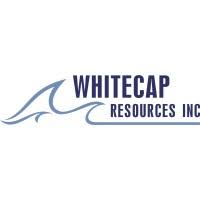
- Ticker: WCP
- Forward Dividend Yield: 7.85%
- Dividend Payout Ratio: 36.32%
- Dividend Yield (12-Month Trailing): 6.21%
- Upcoming Dividend Date: Feb 15, 2024
- Market Cap: $5.21 Billion
Whitecap Resources is an upstream energy company engaged in the extraction of oil and, to a limited extent, natural gas. It operates in three provinces – Alberta, Saskatchewan, and British Columbia, and as per the company’s claims, over 50% of its inventory is counted among the best assets in North America.
The company has several other financial and operational strengths as well. The operational strengths include its premium assets and their life (at least 25 years).
Its carbon dioxide sequestering operation is massive, and the company stores about 2 million of the gas each year. That’s comparable to companies dedicated to carbon sequestering.
It’s more than just an ESG “honorific.” As a sustainable producer with solid numbers to back up its claim, Whitecap can attract both ESG investors and institutional investment more readily compared to its low ESG score peers.
Financially, it’s a great pick for its low debt and its radical revenue growth between 2020 and 2022 – well over 4.5x. This indicates how quickly (if you are evaluating for the long-term) it can bounce back from adverse market events like COVID.
Its dividends are also financially sustainable, with a payout ratio below 30% and only about 53% of its free fund flow going back to shareholders.
Its forecasts are quite reasonable, and buying back shares is a financial priority for the company. The yield of over 5% and an attractive valuation (at the time of writing this) are strong points in the company’s favour, but you should look into the company’s dividend history as well.
It has a history of cutting dividends to keep them financially viable, which is essentially a healthy approach, but you won’t like this trend reflected in your dividend income from this company.
That said, you should know that its future, at least the next few years, seems brighter than its past few years.
2. Northland Power
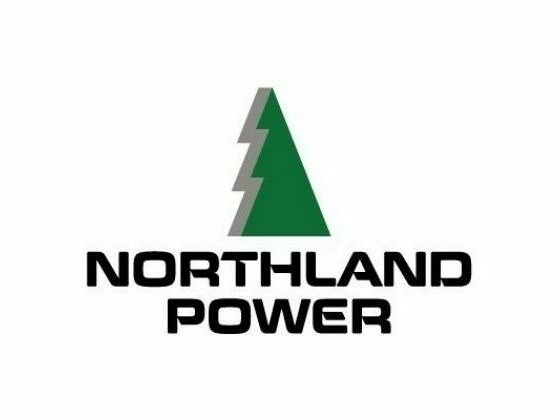
- Ticker: NPI.TO
- Forward Dividend Yield: 5.31%
- Dividend Payout Ratio: 76.92%
- Dividend Yield (12-Month Trailing): 5.12%
- Upcoming Dividend Date: Feb 15, 2024
- Market Cap: $5.96 Billion
Northland Power is a major electricity producer in Canada with a “clean” and green portfolio of power-producing assets. Over 75% of its portfolio is made up of renewables, primarily wind, and the rest comes from natural gas.
The portfolio is geographically diversified as well – with 40% of its asset base in Europe and 25% in Asia.
The current net capacity is 3 GW (Gross), which might be considered relatively low for a company of its size, but its projections are quite ambitious – 12 GW by 2030.
All these strengths literally come at a cost, and part of this price is a significant debt of $7.4 billion, which at the time of writing this, is larger than its current market capitalization.
But it’s important to remember that heavy debt is common in the utility sector, considering the installation and maintenance costs associated with maintaining existing assets and acquiring/developing new ones.
It has shown steady financial growth between 2015 and 2022 – with sales growing from $728 million to $2.4 billion and net income from $27 million to $955 million.
Its dividends have mostly remained financially stable, with a payout ratio below 75% (Except 2021). Thanks to a massive discount, the yield and value are both quite attractive at the time of writing this, and though the stock hasn’t done so recently, it did grow its payouts twice in the last decade.
As a utility business, especially a financially healthy one that is generating a decent operating income, Northland Power seems like a solid dividend pick, but you should keep an eye on its debt. If the company starts mismanaging its debt and stretches itself too thin (financially), it may become a risky holding.
3. Exchange Income
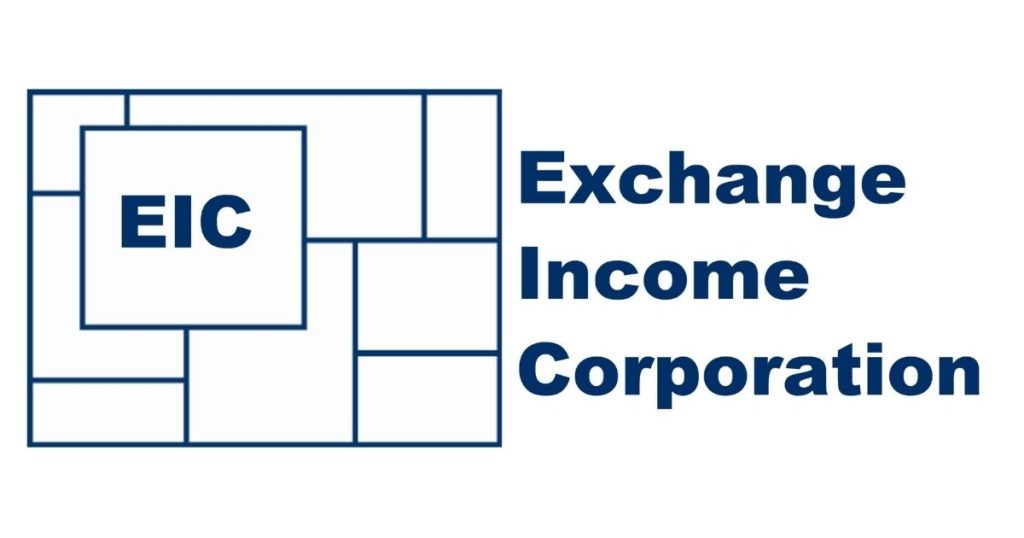
- Ticker: EIF.TO
- Forward Dividend Yield: 5.79%
- Dividend Payout Ratio: 94.74%
- Dividend Yield (12-Month Trailing): 5.41%
- Upcoming Dividend Date: Feb 15, 2024
- Market Cap: $2.14 Billion
Exchange Income is an acquisition-oriented company that has developed a diverse portfolio of aviation and aerospace businesses.
This includes an aeromedical service in Kuwait, a stainless fabrication company and a crew training company in the US, and a variety of local businesses. It also has a few regional airlines in its portfolio.
It’s a debt-heavy business, but the bulk of its debt is long-term, which often spikes thanks to its acquisitions. Apart from that, the financials seem quite healthy. The revenue has doubled in the decade between 2013 and 2022, and net earnings have grown by a significant margin in the last three years alone.
It also has leadership consistency, with Mike Pyle serving as the CEO since 2006.
It also has a stellar dividend history, although its aristocratic status is currently disputed as it paused dividend growth for a year (similar to the banks); in the subsequent year, it grew its payouts twice.
The payouts are typically financially viable, and the yield typically remains above 5%. The valuation is modestly high at the time of writing this.
You should understand that despite the risk it carries as an aerospace-oriented company, which manifested as a 60% devaluation during COVID, it’s a very resilient stock that made a swift recovery.
Its long-term capital appreciation potential is also a factor worth considering, whether or not it’s a primary concern for you. There is relatively little downside to this stock.
4. First National Financial
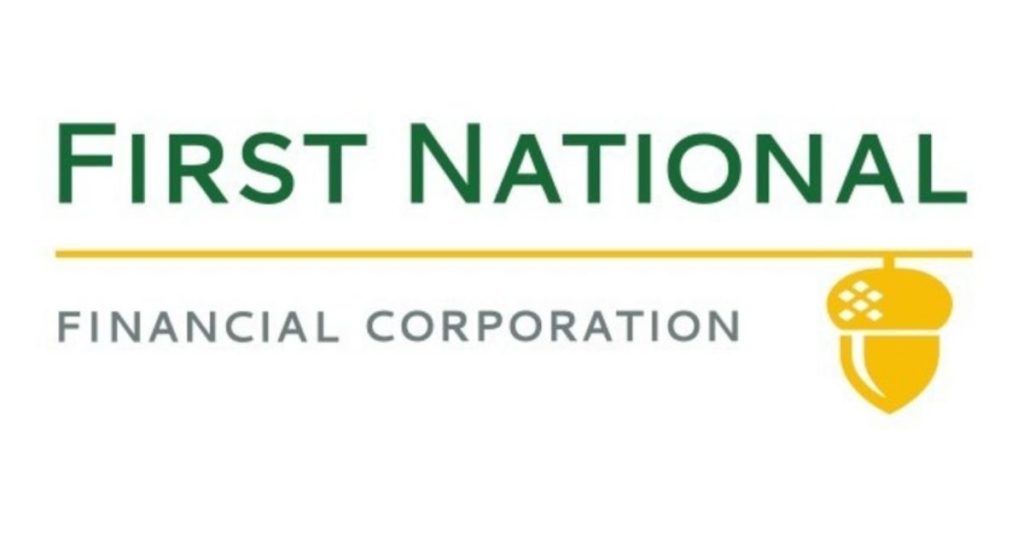
- Ticker: FN.TO
- Forward Dividend Yield: 6.36%
- Dividend Payout Ratio: 58.01%
- Dividend Yield (12-Month Trailing): 6.04%
- Upcoming Dividend Date: Feb 15, 2024
- Market Cap: $2.35 Billion
First National Financial is a leader in a niche market – non-bank mortgage lenders. It’s an incredibly difficult market to break into if you are vetting customers on the same credit standards as big banks (good credit score).
But First National still managed to acquire a decent piece of this market by offering flexible and fast mortgage solutions.
It also offers commercial mortgages and loans. In 35 years, the company has furnished over 300,000 residential mortgages and over 5,700 commercial loans.
Its mortgage portfolio is substantial compared to its market capitalization, and over two-thirds of it consists of insured mortgages, so the level of financial uncertainty is relatively low.
A major strength of the company is its 38% insider ownership, which is beyond impressive. However, its long-term financial growth (in the last decade) is minimal, even though the stock has risen by a decent margin over the same period.
It hasn’t impacted the financial sustainability of its dividends, and its dividend history is not just financially healthy, but it’s also augmented with consistent dividend growth for eleven years (in 2023).
Even though First National Financial is a stellar dividend aristocrat, you should take into account its exposure to the housing market.
If the housing bubble bursts in Canada, it may put a financial strain on this company, similar to what US banks experienced in the great recession (significantly throttled, thanks to Canada’s strong financial oversight). It may be exacerbated by the fact that it’s a small player in the mortgage market.
5. Peyto Exploration & Development
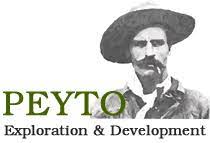
- Ticker: PEY.TO
- Forward Dividend Yield: 10.80%
- Dividend Payout Ratio: 63.33%
- Dividend Yield (12-Month Trailing): 8.8%
- Upcoming Dividend Date: Feb 15, 2024
- Market Cap: $2.48 Billion
Peyto is an upstream company, and even though they tend to be more vulnerable to energy price fluctuations compared to midstream players, Peyto offers certain advantages. The primary advantage is its position among the most significant natural gas producers in the country.
Its share in the overall mix was only 3% in 2022, but that’s quite significant, considering it’s a mid-cap (on the lower end), while all producers with a bigger share are large-cap energy companies.
Its other strength is its reserves. There are enough reserves to keep producing at the current level for nine years, and the reserves for the next 24 years have been developed but are not currently producing. So the company may be good for the next two decades.
It’s also a low-cost producer that’s currently producing at $1.62/mcfe, which is significantly lower than the 2022 breakeven of US $2.31/mcfe. The natural gas focus itself is a major strength as it’s the cleanest fossil fuel that may outlast oil in the market.
All of these are strong points for a dividend payer. Its financials are healthy, not strong, but the valuation is quite attractive. But the dividend-related financials, i.e., the payout ratio, has been quite stable since 2018, though it’s partly because of the dividend cuts it introduced.
The company is also heavily discounted from its 2016 peak and quite undervalued at the time of writing.
The current yield is exceptional – over 10%, but you should know that the company slashed its dividends (and occasionally suspended them) between 2018 and 2022, but to its credit, it has restored the payouts to its former level, hence the high yield.
It’s a very strong monthly dividend payer pick right now, but you should keep its dividend history in mind to make an informed decision.
6. Freehold Royalties
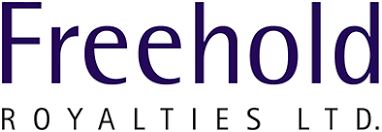
- Ticker: FRU.TO
- Forward Dividend Yield: 7.87%
- Dividend Payout Ratio: 117.39%
- Dividend Yield (12-Month Trailing): 7.95%
- Upcoming Dividend Date: Feb 15, 2024
- Market Cap: $2.05 Billion
Freehold Royalties offer a unique way to invest in the energy sector – through land royalties. The company owns about 6.4 million cross acres in Canada and 0.9 million gross acres (drilling) in the US.
About 80% of the company’s revenues come from oil and Natural Gas Liquids extracted from its lands, and the rest from natural gas.
Despite a significantly smaller land position, the US holdings contribute 40% of the company’s revenue, and the company has major prospects in the country – over 7,450 locations that can be developed/drilled.
The financials of the company are growing at a healthy pace – over 2.8 times in the five years between 2018 and 2022. The netback from production over this period almost doubled.
Its healthy financials support healthy dividends, but its payout history has been quite erratic. In one year (2020), the company slashed its payouts by 71%, and in the next year, it grew its dividends by 300%.
An easy way to understand it is that the company’s dividends reflect its financial position and, to an extent, the financial condition of the energy sector in Canada.
You should understand the risk and benefit this approach to dividends carry. The lack of consistency will benefit you when the energy sector is thriving since the company may pay outsized dividends compared to the rest of the sector.
But if the sector is in trouble (like it was during COVID), you may experience a massive dividend cut. It may hurt in the short term but will even out in the long term.
7. Sienna Senior Living

- Ticker: SIA.TO
- Forward Dividend Yield: 8.56%
- Dividend Payout Ratio: 628.19%
- Dividend Yield (12-Month Trailing): 7.75%
- Upcoming Dividend Date: Feb 15, 2024
- Market Cap: $863.20 Million
Sienna Senior Living is a Markham-based senior care company that offers different types of senior living options, including long-term care facilities (43 in two provinces) and retirement communities/residences.
Seniors aged 85, i.e., the bulk of the target market for long-term care facilities, is a steadily increasing population segment in Canada.
The number was 861,000 in 2021 and is expected to triple by 2046. Annualized, that’s an addition of about 68,880 new seniors aged 85 or more, which indicates adequate target market growth.
The company boasts a healthy occupancy rate, and even though it fluctuates, it typically remains close to or above 90% for both retirement communities and long-term care services.
But it’s also an expensive business – with thousands of staff members and dozens of facilities to maintain. However, a consistent cash flow helps keep the business afloat.
The financial health of its dividends is not very impressive, but its dividend history is. It has been paying dividends quite consistently since 2010 and has grown its payouts at least twice during that period.
You might be interested in Sienna Senior Living right now, thanks to its impressive yield (close to 8% at the time of writing this). The financials might seem off-putting to you, but the dividend history endorses the company’s ability to meet its dividend obligation to the investors.
However, you should consider the reputational risks a company like Sienna carries. One major scandal or a reputation for mistreatment may significantly impact its business and, consequently, its dividends.
8. Extendicare

- Ticker: EXE.TO
- Forward Dividend Yield: 6.81%
- Dividend Payout Ratio: 228.57%
- Dividend Yield (12-Month Trailing): 6.93%
- Upcoming Dividend Date: Feb 15, 2024
- Market Cap: $577.89 Million
Extendicare offers its investors a different slice of senior care. Even though the bulk of its revenue comes from the long-term care facilities under the company’s purview, a significant segment (over 44% in 2023) comes from its homecare services and managed services.
This service mix makes it a slightly less expensive senior care business with more scalability potential.
It has substantial debt, and its financials aren’t weak per se, but they are not as healthy as they used to be. The Funds from Operations fell from $66 million to $22 million between 2013 and 2022. However, the net income has been in the green for the last three years.
Its major strengths as a monthly dividend stock in Canada are a good dividend yield and stable dividend history. It has maintained its payouts at the same level for a decade, while its payout ratio has almost never been at a healthy level.
You should evaluate its financial weaknesses against its operational strengths. If the company maintains and grows its current operational reach, especially in the homecare business, the financials will eventually catch up.
Meanwhile, you will have to rely on its commitment to maintaining its dividends and its payout history for your dividend sustainability.
9. Atrium Mortgage Investment
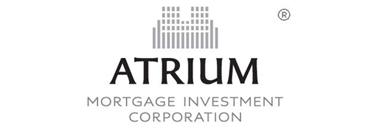
- Ticker: AI.TO
- Forward Dividend Yield: 8.70%
- Dividend Payout Ratio: 76.27%
- Dividend Yield (12-Month Trailing): 7.92%
- Upcoming Dividend Date: Mar 12, 2024
- Market Cap: $487.01 Million
Atrium Mortgage offers a range of financial solutions to commercial real estate owners/investors and conventional residential mortgages to market segments that are not being served by the banks. This includes self-employed individuals and newcomers to the country that may not have an adequate credit history.
From a portfolio perspective, the two major strengths of the company are its portfolio mix, which is over 95% first mortgages, and over 96% of the loans have a Loan-to-Value (LTV) ratio of less than 75% (Q1 2023).
A low LTV portfolio indicates that most of the company’s customers have enough “skin in the game” that their chances of defaulting on their mortgages are low.
Another strength of the company is its minimal operational expenses, which allows it to divert a hefty portion of its income to shareholders without jeopardizing the financial viability of its operations.
The payout ratio has been quite close to crossing the 100% mark in the past decade, but it has always remained on the right side of the border.
One thing that may discourage you from Atrium Mortgage as a dividend investment is its low market value, but despite being a small, small-cap stock, Atrium has exhibited adequate financial strength to easily sustain its dividends.
It’s healthy yield and attractive valuation are current incentives to consider this stock, and its financial history endorses its position as a long-term holding.
Canada’s Monthly Dividend Paying REITs
REITs in Canada work a bit differently than regular stock, but they pay monthly dividends. For a list of our top picks of the best REITs in Canada, go here.
| Company | Ticker | Market Cap | Dividend Yield (12-Month Trailing) |
|---|---|---|---|
| Automotive Properties | APR-UN.TO | $503.30 Million | 7.7% |
| Allied Properties | AP-UN.TO | $2.17 Billion | 10.14% |
| Artis | AX-UN.TO | $647.72 Million | 9.45% |
| Boardwalk | BEI-UN.TO | $3.79 Billion | 1.56% |
| BTB | BTB-UN.TO | $257.87 Million | 9.93% |
| Canadian Apartment Properties | CAR-UN.TO | $8.18 Billion | 2.92% |
| Choice Properties | CHP-UN.TO | $9.58 Billion | 5.47% |
| Crombie | CRR-UN.TO | $2.40 Billion | 6.45% |
| CT | CRT-UN.TO | $3.30 Billion | 6.11% |
| Chartwell Retirement Residences | CSH-UN.TO | $2.88 Billion | 5.09% |
| Dream Industrial | DIR-UN.TO | $3.76 Billion | 5.17% |
| Dream Office | D-UN.TO | $288.73 Million | 9.86% |
| First Capital | FCR-UN.TO | $3.44 Billion | 5.19% |
| Granite | GRT-UN.TO | $4.75 Billion | 4.2% |
| H&R | HR-UN.TO | $2.68 Billion | 6% |
| InterRent | IIP-UN.TO | $1.93 Billion | 2.63% |
| Killam Apartment REIT | KMP-UN.TO | $2.24 Billion | 3.58% |
| Minto Apartment | MI-UN.TO | $651.15 Million | 2.87% |
| Morguard North American Residential | MRG-UN.TO | $800.41 Million | 4.75% |
| Morguard | MRT-UN.TO | $348.89 Million | 4.42% |
| NorthWest Healthcare Properties | NWH-UN.TO | $1.02 Billion | 17.46% |
| Plaza Retail REIT | PLZ-UN.TO | $397.60 Million | 6.45% |
| RioCan Real Estate Investment Trust | REI-UN.TO | $5.38 Billion | 5.81% |
| Slate Grocery REIT | SGR-UN.TO | $710.77 Million | 6.92% |
| Slate Office REIT | SOT-UN.TO | $74.22 Million | 29.89% |
| SmartCentres | SRU-UN.TO | $4.03 Billion | 7.62% |
| True North | TNT-UN.TO | $141.64 Million | 26.41% |
Importance of Diversification in Dividend Investing
Diversification in dividend investing acts as a shield against market unpredictability. By spreading investments across various sectors and companies, risks related to a specific area’s downturn are minimized. This approach also ensures a more balanced flow of dividend income, as different sectors may perform differently based on market conditions.
Diversifying also provides investors with a chance to tap into the growth of multiple industries, from traditional sectors like banking to emerging ones like technology. A well-diversified portfolio remains resilient, navigating market changes with fewer adverse impacts.
What are some low-cost Canadian monthly dividend Stocks?
Extendicare and Atrium Mortgage are among the appealing low-cost Canadian monthly dividend stocks. Extendicare is notable for its diversified offerings in senior care and has a history of consistent dividends. In contrast, Atrium Mortgage serves niche segments, especially those not traditionally catered to by mainstream banks.
How to Buy Monthly Dividend Stocks In Canada
The cheapest way to buy stocks is from discount brokers. My top choices in Canada are:
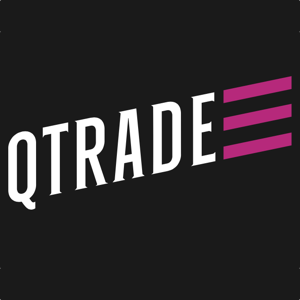
- 105 commission-free ETFs to buy and sell
- Excellent customer service
- Top-notch market research tools
- Easy-to-use and stable platform

- Stock and ETF buys and sells have $0 trading fees
- Desktop and mobile trading
- Reputable fintech company
- Fractional shares available
To learn more, check out my full breakdown of the best trading platforms in Canada here.
Conclusion
Canada has a lot of excellent monthly dividend stocks to choose from.
While monthly dividend stocks can be constrained in how they manage their business over long periods of time, they can be a great addition to portfolios geared toward monthly income.
Aside from monthly dividend stocks, you can also invest in some of the best monthly dividend ETFs that can help potentially further improve your portfolio’s diversification.






Pembina is sadly no longer monthly.
Thanks Patrick I’ve removed it from the list.
There’s at least a couple missing from your full list at the top:
Diversified Royalty Corp. (DIV.TO)
Sienna Senior Living Inc. (SIA.TO)
Thanks Steve good catch, I had them on the list and they got cutoff as I was updating them
Thanks
Hopeful
Thanks!